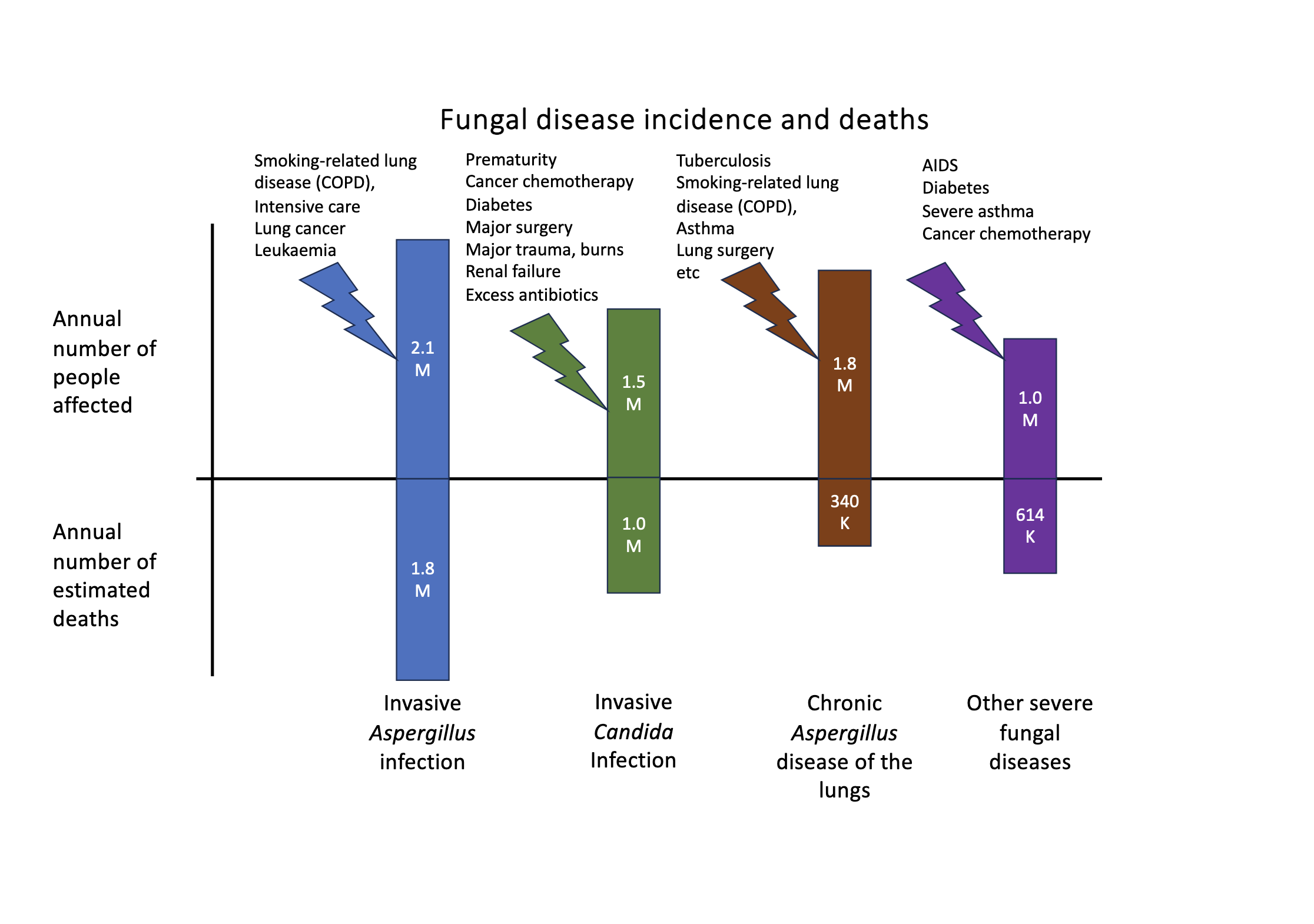In 2024, the first global incidence of life-threatening fungal diseases was published. [hyperlink]. The best estimate is 6.55 million people affected each year, with 3.75 million deaths, of which 2.55 million (68%) were directly attributable to the fungal infection. The other people who died probably died with the fungal infection a contributory cause.

Some fungal diseases are really common. Examples include ‘Athlete’s foot’, dandruff, yeast infections in women (vulvovaginal candidiasis). Others are exceptionally rare such as Basidiobolus infections of the gut in children in the Middle East. Some are relatively common in people with specific underlying conditions, such as invasive aspergillosis in leukaemia or cryptococcal meningitis or Pneumocystis pneumonia in AIDS.
As most fungal diseases are challenging to diagnose and there are very few surveillance programs, precise numbers are elusive. Thousands of studies documenting fungal disease frequency are published. These have been used to make estimates by fungal diseases or by country. Read more
A recent paper estimated that there are about 6,550,000 million people affected each year with a life-threatening fungal disease. Most have underlying immune problems or chronic chest disease. Click to read
Common fungal disease problems:
Skin, hair and nails fungal infections: ~ 1 billion people
Vulvovaginal candidiasis: ~70% of women, especially during pregnancy and ~135 million with repeated episodes
Fungal asthma: 10-25 million adults and ~2 million children, with possibly 40,000 deaths annually
Fungal keratitis (front of eye infection): 1.0-1.5 million per year
Chronic pulmonary aspergillosis (often mistaken for or after tuberculosis (TB)): ~6 million affected.
A recent summary of antifungal resistance was published in the European Journal of Hospital Pharmacy. Click to read
